9 ways to embrace the darkness for International Dark Sky Week
Drew Reagan wants you to embrace the darkness. “The irony of my life’s work is that as a kid, I was extremely afraid of the dark,” says Reagan of DarkSky International, a nonprofit that works to conserve the beauty and ecological benefits of nighttime environments by promoting responsible outdoor lighting. “Now, I think there’s something really powerful about the night and a kind of comfort to be found in darkness.”
Many children — and adults — are scared of the dark and what we can’t see hiding in its depths. Understanding all the good things that darkness gives us can help us be less fearful. “The benefits can be looking up at the stars and understanding the cosmos,” Reagan explains. “It can be how, as a teenager, you want to be invisible — night gives you invisibility. It gives you a place to connect, to tell stories or to have hard conversations. And the night gives us so many cool creatures.”
Right now is a great time for families and youth to explore natural darkness: April 21 to 28 is International Dark Sky Week — a global celebration of the night.
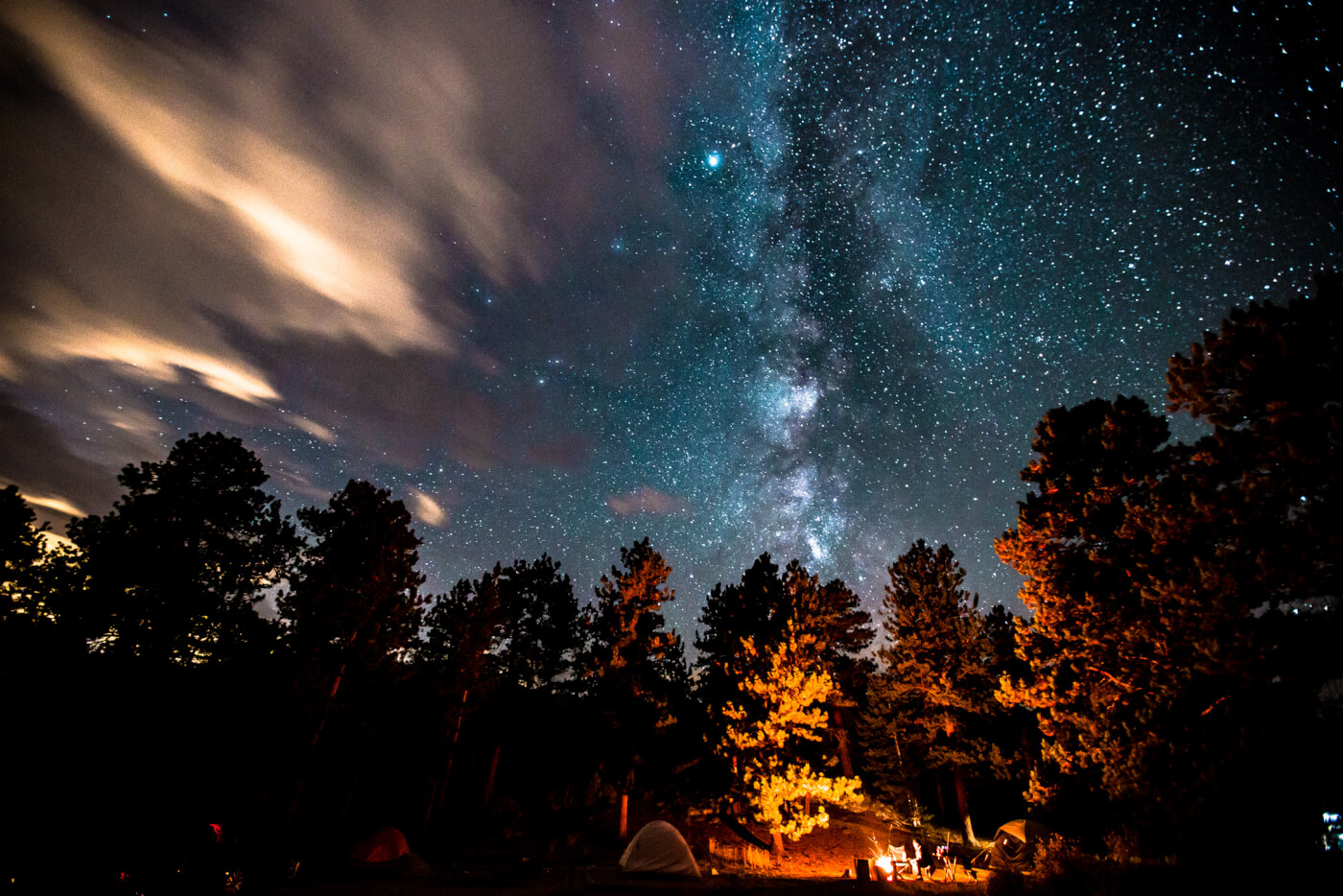
Camping beneath the stars in the Rocky Mountain National Park. Photo courtesy of More Than Just Parks.
Dark Sky Week was created by a young person with a passion for astronomy. In 2002, 15-year-old Jennifer Barlow single-handedly launched a campaign to get people to turn off their outdoor lights for one week “to reconnect with the night sky,” she said at the time. “Most of us have forgotten the legacy of the night sky, as it seems to fade away behind the blanket of light pollution.”
“Most of us have forgotten the legacy of the night sky, as it seems to fade away behind the blanket of light pollution.”
To get her message out, Barlow built a website and handed out flyers, talking to people about why we should care about preserving access to our starry skies — in the same way we protect clean air and water. Her efforts earned endorsements from DarkSky International, American Astronomical Society, Astronomical League and Sky & Telescope. In 2003, the first National Dark Sky Week was born.
Today, Dark Sky Week is an international event, but its mission has stayed the same: getting people excited to turn off the lights, go outside and really experience the night. “We need the night for so many reasons, beyond the beauty of the stars, right?” Reagan says. “So Dark Sky Week is about building appreciation for how the night supports wildlife ecosystems and human health and well-being — and how the stars have informed our cultural identities.”
“The night needs more advocates,” he adds. “How can you protect something when you don’t understand it or the threats against it?”
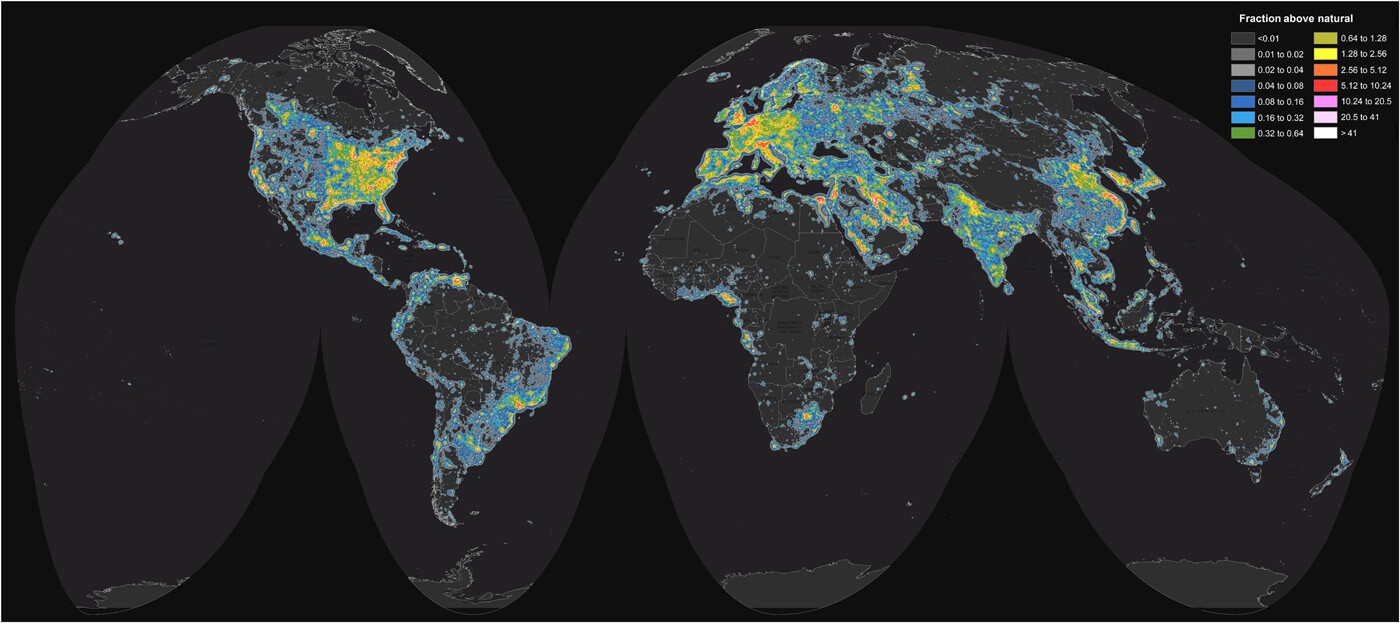
The New World Atlas of Artificial Sky Brightness, an interactive map, uses data from satellite images to measure light pollution from artificial lighting sources. Copyright © 2016, The American Association for the Advancement of Science. Photo republished under the terms of the Creative Commons Attribution-NonCommercial license.
So what is light pollution? It’s excessive or inappropriate light, like when we overlight an area, fail to use timers or shields, or use the wrong color of light. And, for something so simple, flooding environments with light can be as disruptive to an ecosystem and its inhabitants as cutting down a forest or draining a wetland. Here are a few examples:
- At night, fireflies use their bioluminescent lights to flirt with potential suitors. Artificial light causes missed connections and makes fireflies vulnerable to population decline.
- Migratory butterflies and birds rely on the stars and moon for navigation. Artificial light can set them off course, ground them in less ideal habitats or cause fatal collisions.
- Nocturnal critters hunt at night, from foxes to owls to pollinators foraging night-blooming flowers. Artificial light makes it harder to find food — and avoid being food.
- For humans, darkness is an important signal for our circadian rhythm, the internal clock that controls physical and mental systems throughout our body. This can affect everything from cognition to digestion to immune system function.
Light pollution already covers about 80% of the world, and is doubling every eight years. If you live in a city, you’ve probably noticed how “sky glow” — the combined effect of streetlights, buildings and homes shining light upward — makes it hard to see more than a handful of stars.
In fact, recent research says that globally, 3 in 10 people can’t see the Milky Way — the luminous galaxy that is home to Earth and its solar system. In the U.S., that number goes up. Nearly all U.S. children live under light-polluted skies, and the Milky Way is hidden from view of nearly 80% of North Americans.
What does it mean to lose sight of the stars? It could have a profound effect on the way we understand history, our cultural heritage — and our place in the world. “For Indigenous communities, so much knowledge and tradition is rooted in the cosmos and observing the night skies,” Reagan says. “For many Indigenous groups, light pollution is yet another form of stealing their heritage, continuing a history of erasure.” And the cultural implications extend beyond the preservation of Indigenous traditions — virtually every culture has a deep relationship with the stars, from storytelling to timekeeping to navigating.
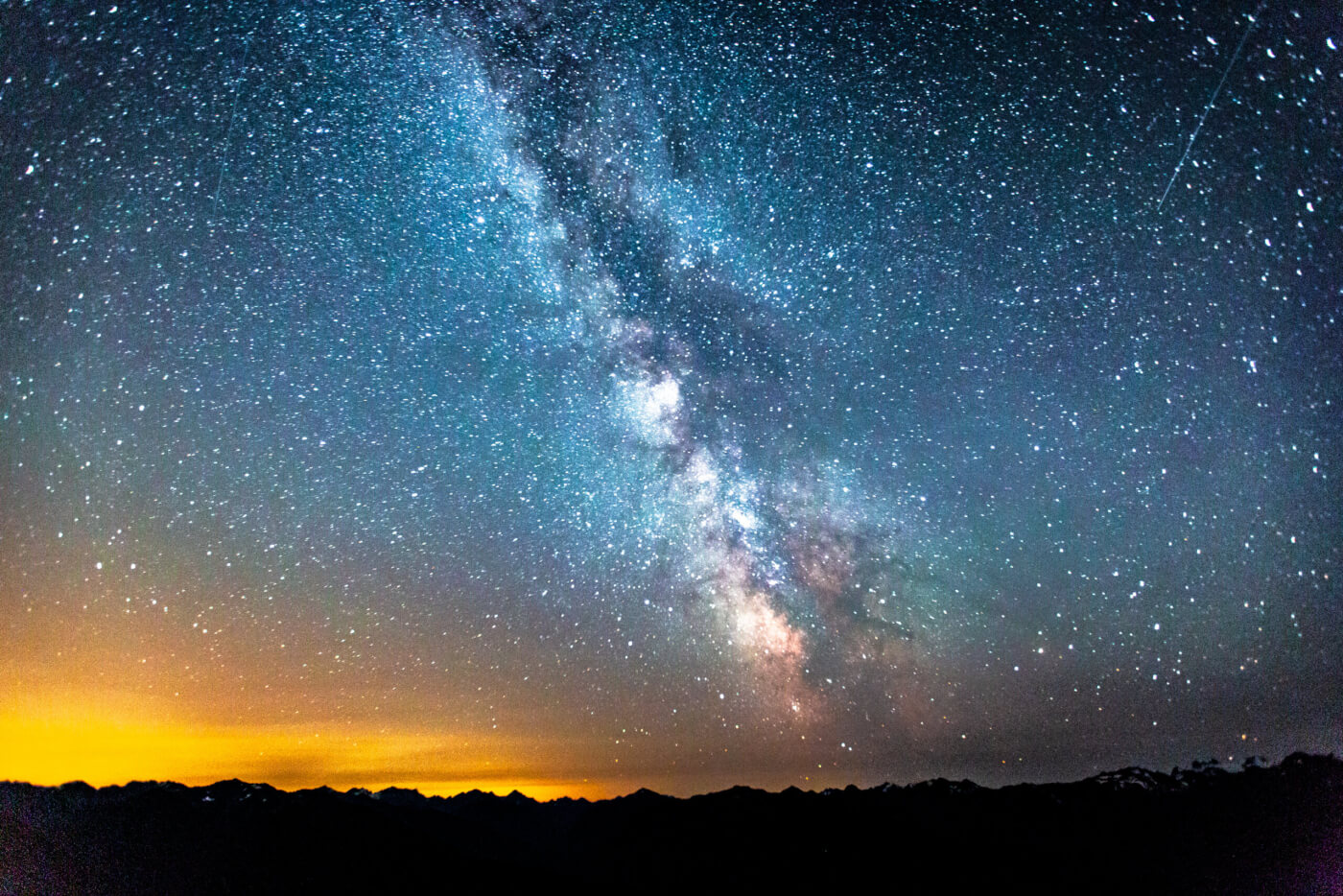
A view of the Milky Way above the peaks of Olympic National Park, Washington. Photo courtesy of More Than Just Parks.
That longstanding relationship is at risk for the first time ever, as fewer and fewer children grow up watching the stars come out each night. “I fear we might end up in a world where kids can’t see the stars,” says Reagan. “If the universe around us becomes only a story that is told to us or that we see only through pictures taken by the Hubble telescope, there could be a disconnect that leads to distrust — what if kids don’t even believe the stars exist?”
The night sky is a great source of awe and wonder — offering an important moment of reflection for young people in particular. To sleep under a blanket of stars is to recognize our smallness in their vastness, to take comfort in their endurance and to ponder all that we have yet to discover. Experiencing that kind of awe is not only peaceful, it comes with many well-studied health and wellness benefits — it can make us more calm, kind, humble, generous and creative.
Here’s the good news: We can all help preserve the night sky. One simple way to get involved during International Dark Sky Week is to take the DarkSky Pledge. Families and children of all ages can commit to learning more about the importance of the night sky, making small changes at home (with big impacts!), and sharing what they’ve learned with others.
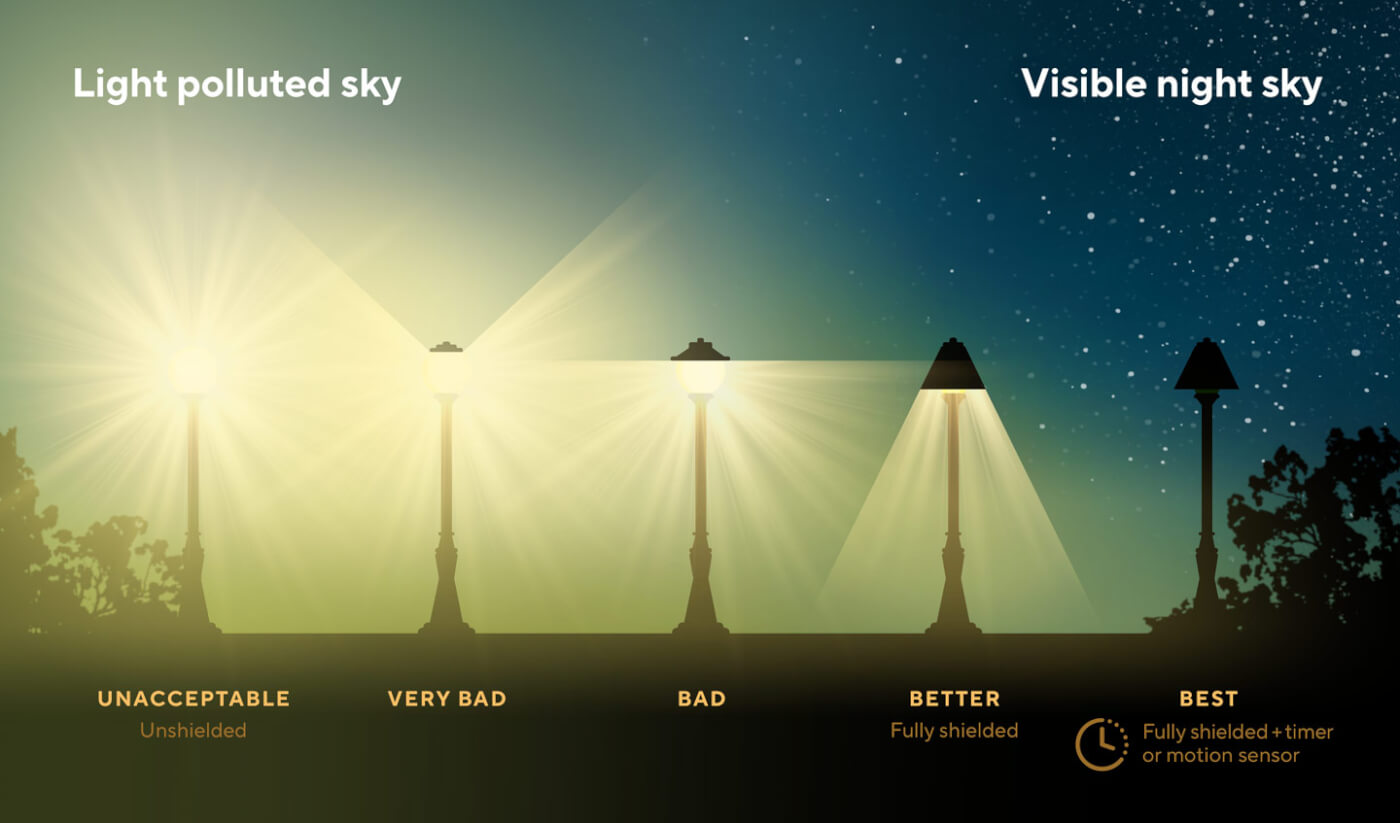
Is your outdoor lighting dark sky-friendly? Photo courtesy of DarkSky International.
You can start by implementing The Five Principles of Responsible Outdoor Lighting at home. The principles provide easy-to-follow guidelines to reduce light pollution, including ensuring that all lighting is necessary, controlled and warm-colored.
“This is a tangible thing that families can do together: go outside, change their light fixtures and reduce bad lighting,” Reagan says. “We all know bad lighting. It shines directly in your eyes, it’s overly bright and glaring — your body just kind of instantly reacts to it.”
Enjoying the night sky with children
There are also lots of ways for families and children to get outside and enjoy natural darkness — while learning about the night sky and all its wonders. To create our list, we reached out to Haley Palamos, educator, astronomer and former Planetarium Director at the Eugene Science Center, a children’s science museum.
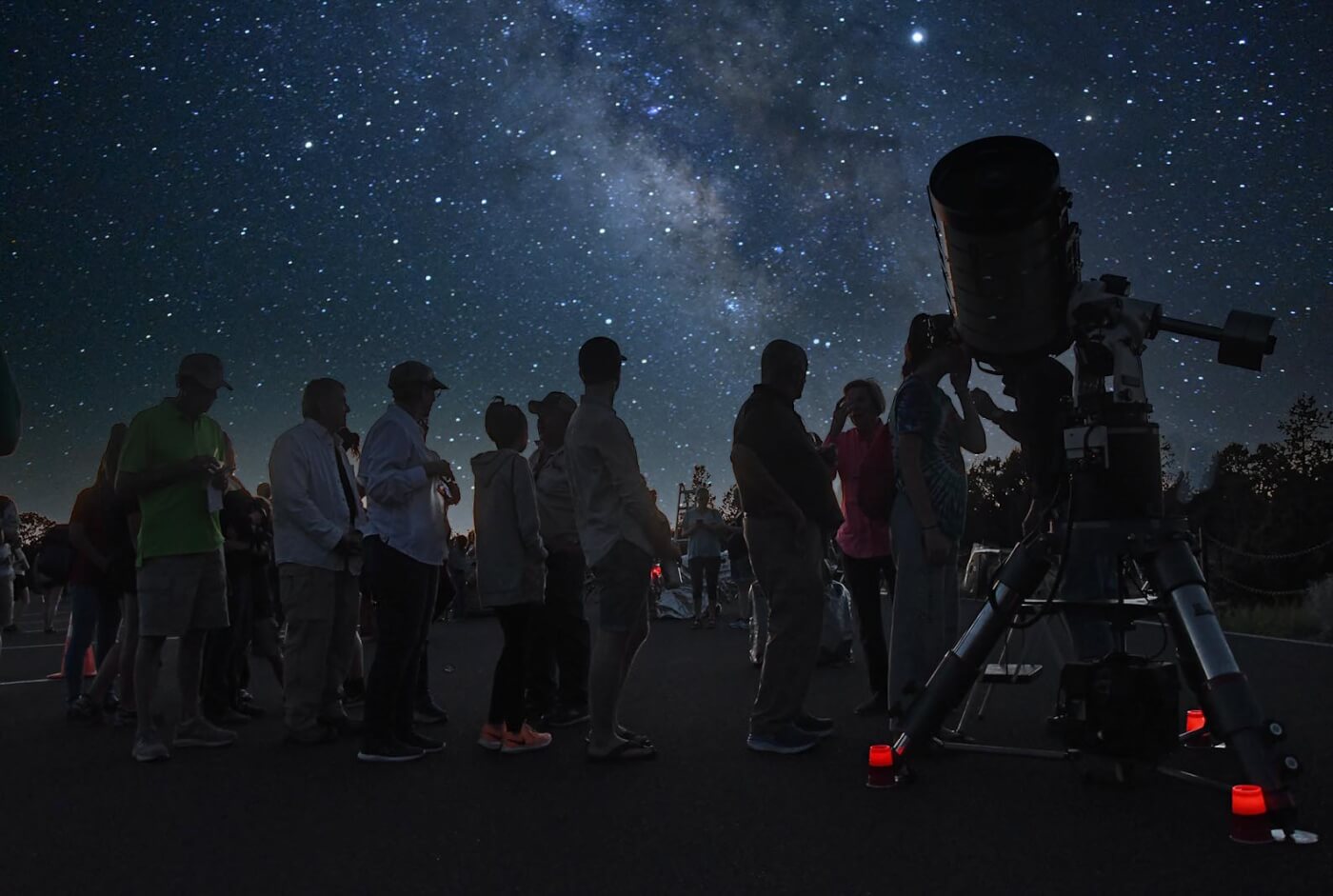
A star party in Grand Canyon National Park, designated a Dark Sky Park since 2016. Photo courtesy of the National Park Service.
1. Find a local star party: Hosted by astronomy clubs, science museums, universities and DarkSky International chapters, star parties are free events where you can stargaze, talk to local amateur astronomers — and peer through their telescopes.
The “opening” of a telescope eyepiece is small, and your eye needs to be aligned correctly to see through it. This can be challenging for children, so Palamos recommends practicing in advance by having them close or cover one eye, and then peer into a paper towel roll with their open eye.
2. Visit a Dark Sky Place: Since 2001, DarkSky International has certified 235 places in 22 countries as “Dark Sky Places.” These are communities, parks and nature areas that preserve dark skies through responsible lighting policies and public education. In addition to a stunning view of the cosmos, many Dark Sky Places offer programming, from guided night hikes to observatories.
You can explore an interactive map of Dark Sky Places online to find one near you.

Zion National Park, located in southern Utah, was officially designated an International Dark Sky Park in 2021. Photo courtesy of More Than Just Parks.
3. Keep a moon journal: “There’s a lot of insight and revelation about the Earth and the moon — and how they orbit the sun together — that can come from observing the moon,” says Palamos.
Take kids outside to look at the moon for several days in a row so they can observe its phase changes. Encourage them to keep moon journals, where they can draw pictures of each phase. Older youth can record details, like date, time and location of the moon relative to objects in the foreground.
4. Become a Junior Ranger Night Explorer: As part of its Night Skies program, the National Park Service has created a Junior Ranger Night Explorer program with a downloadable booklet of star-related puzzles and activities for kids, from learning how to recognize wasteful light to finding the North Star.
The program is self-guided and free — kids can do the activities at a national park, at a local park or parking lot, or even from home. Kids then take the Junior Ranger Night Explorer pledge to protect the night sky and get a nifty virtual high five!
5. Learn the major constellations and asterisms: Help children learn to identify the Big Dipper, Orion’s Belt and more major constellations and asterisms. These well-known clusters of stars are typically made up of the brightest stars in the night sky, which are often visible even in light-polluted, urban skies.
“Get familiar with the Big Dipper — an asterism that’s visible year-round from most northern latitudes — and easy-to-spot seasonal constellations first,” says Palamos. “They’ll serve as signposts to find other, less conspicuous constellations.”
In the northern latitudes, these seasonal constellations are great for beginners and are likely to be visible in the early evening hours before bedtime:
-
- Spring: Leo the Lion
- Summer: The Summer Triangle
- Fall: The Great Square of Pegasus
- Winter: Orion
6. Check out an eclipse: 2026 promises a total lunar eclipse on March 3 and a partial on August 28 — and they’re worth marking on the calendar. You don’t need any special equipment to view them, and they’re visible across a large portion of our planet.
“Seeing a lunar or solar eclipse is a memorable experience,” says Palamos. “Many professional astronomers attribute their interest in studying the night sky to memories of viewing an eclipse as a child.” Learn more about how to watch a lunar eclipse with children in this article.
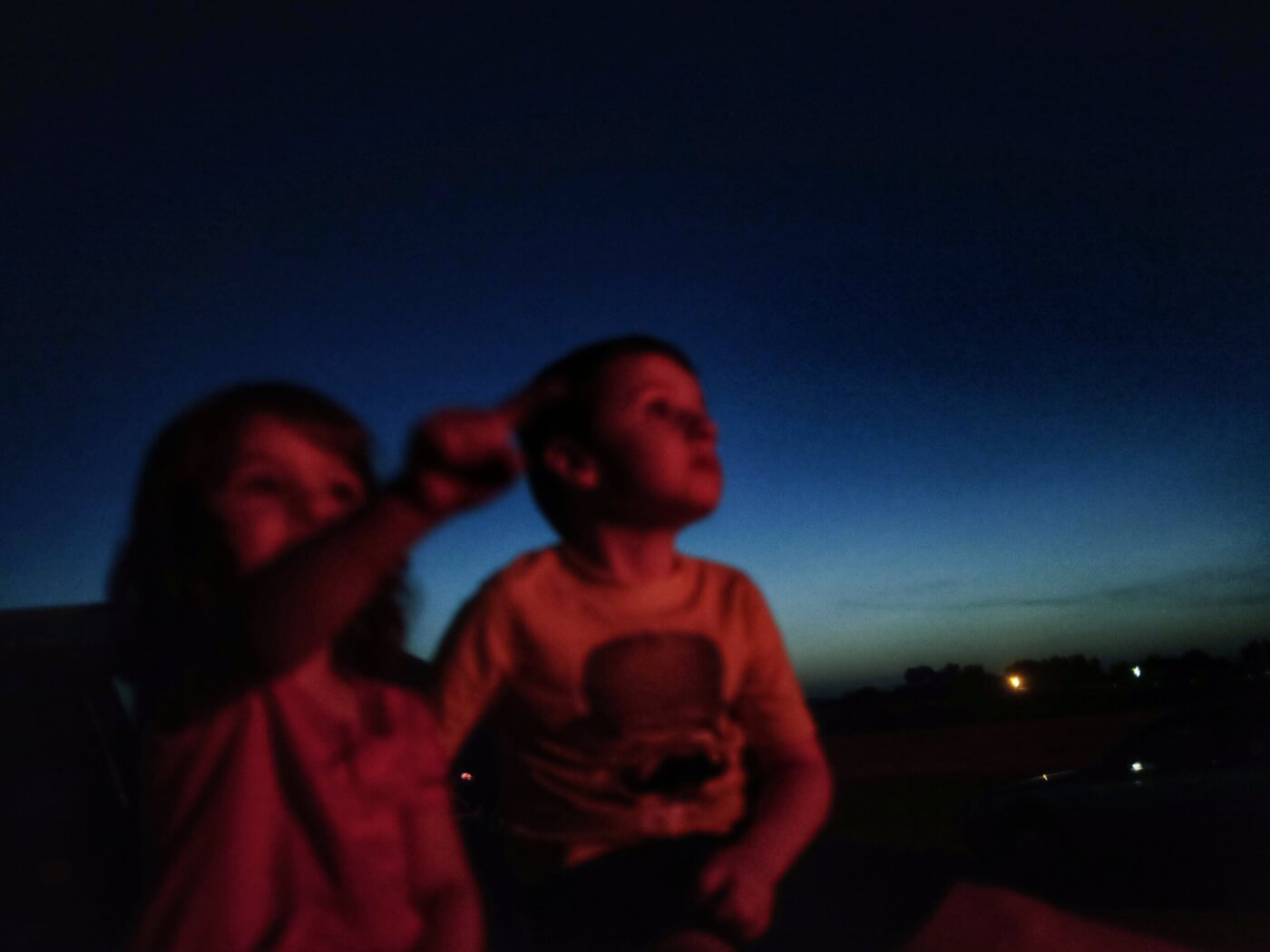
iStock.com/EyeEm Mobile GmbH
7. Visit your local planetarium: With immersive, full-dome projections, planetariums give you a front row seat to the night sky, planet Earth and the galaxy — regardless of light pollution or weather conditions. Planetarium shows are diverse, offering opportunities to explore everything from what it’s like to be an astronaut, to the mysteries of dark matter, to the origins of planet Earth. Your local planetarium might offer a seasonal peek at the sky above you — or a tour of the cosmos set to music.
8. Turn off the lights and go outside: For a low key adventure, simply turn off the porch lights and go outside. You can listen to the night sounds, observe any critters in the yard and look up at the stars.
9. Capture the awe in art: Whatever your family does for International Dark Sky Week, you can use art to record whatever aspect of natural darkness captures your imagination. That might be a poem about an imaginary trip through the Milky Way, a finger-painting of the moon, a sound recording of nocturnal critters or … .
Does your family have a favorite way to enjoy a starry night? Tell us all about it in the comments.
1 Comment
Submit a Comment
International Dark Sky Week, information and events
International Dark Sky Week Pledge
What’s up – A monthly NASA video guide to the night sky
The Sky Live – A complete guide to the solar system and night sky
Every child deserves to see the stars, a Finding Nature News story from Richard Louv
Sky blindness and starlight, a Finding Nature News story from Richard Louv
Five great ways to nurture your inner hunter and gatherer, a Finding Nature News story from Richard Louv
Under the dome of the universe, every night is Father’s Day, a Finding Nature News story from Richard Louv
Celebrating the rhythms of life with the harvest moon, a Finding Nature News story
Keeping kids in the dark is a good thing when it comes to night hiking, National Geographic
“The new world atlas of artificial night sky brightness,” original study and interactive map
-
Network News
POLICY UPDATE: Policy and advocacy for the children and nature movement
-
Voices
Binoculars, bald eagles and my journey as a Black birder
-
Richard Louv
THE WONDER BOWL: Ten Spring and Summer Nature Activities for Kids and Adults
-
Network News
Minneapolis Spotlight: The promise and possibilities of parks for youth
-
Voices
Why nature is my motherhood ally


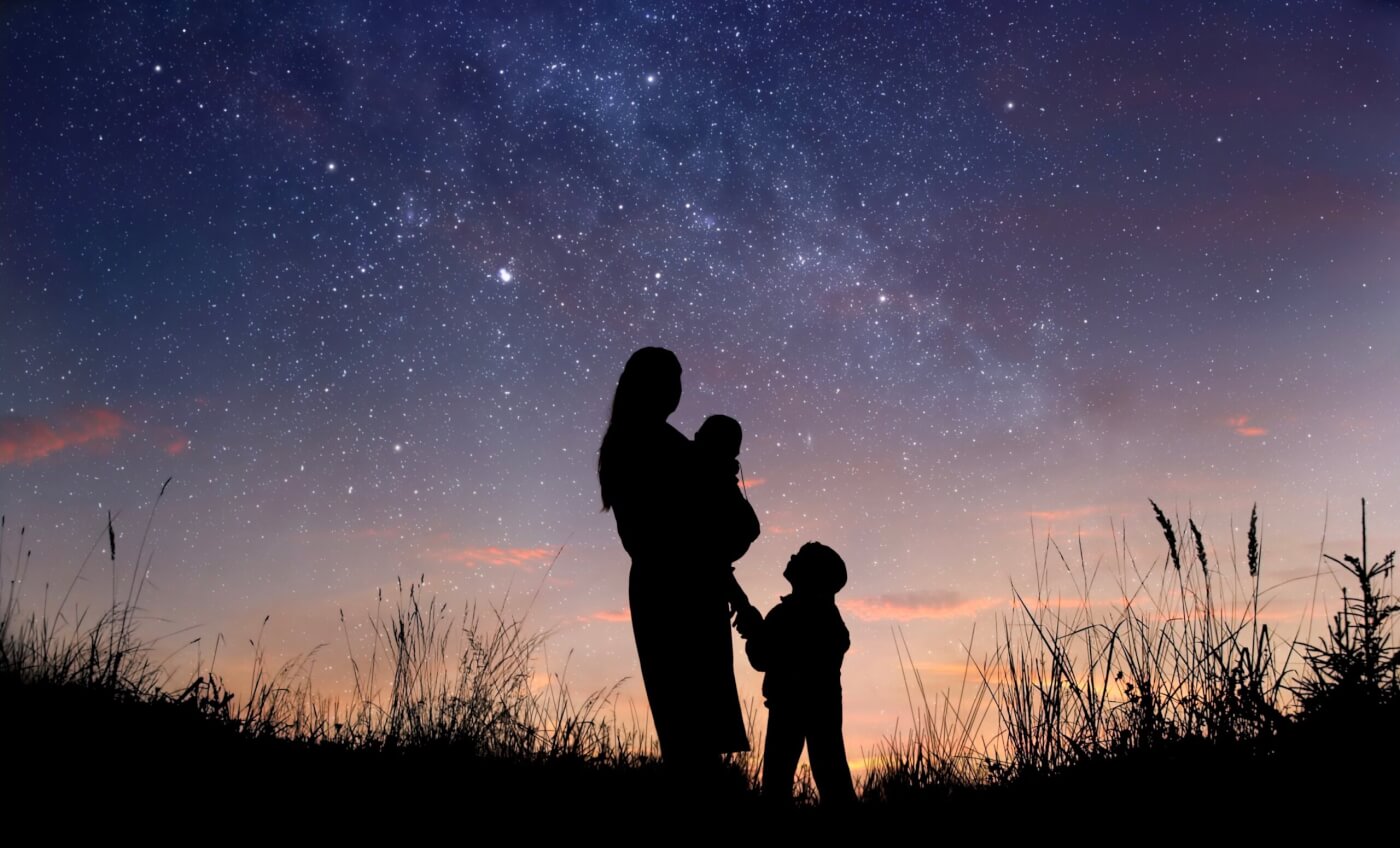

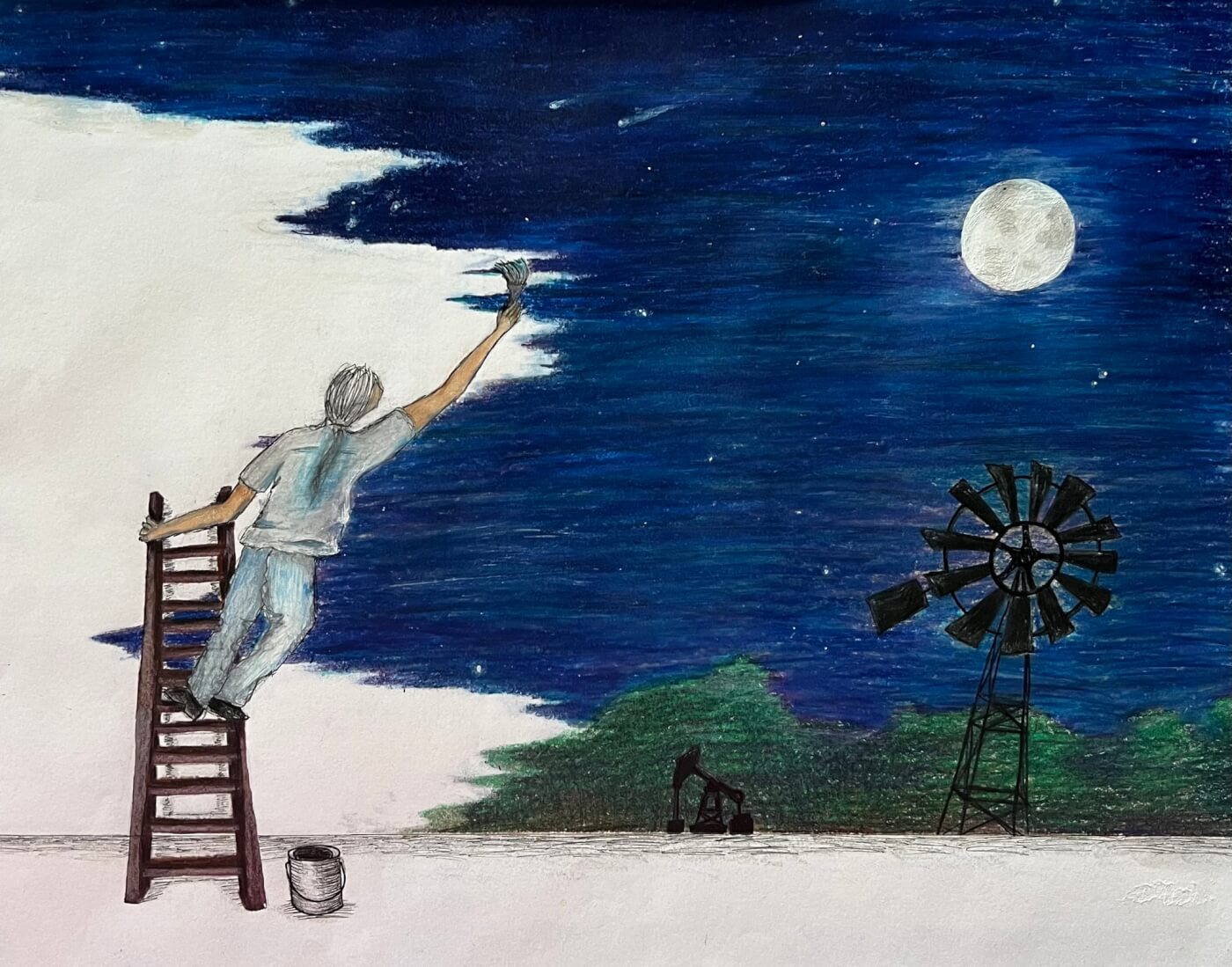



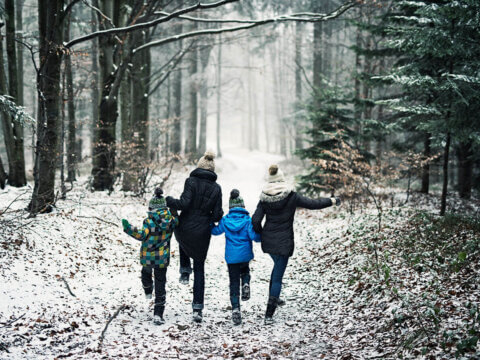

Almost no one spends time outside in the dark for the 15+ minutes it takes for our eyes to adjust to the darkness, except when it is planned. Think about it! People living in urban areas with street lights may have never seen the night sky.
I caution making too much of the importance of dark skies for star gazing. Some people get the impression from this messaging that there is no sense in even trying to star gaze unless they are at some high altitude desert. In fact, some light pollution washes out the millions of dim stars and makes it easier to make out some constellations.
One novel technique for learning the night sky is “star hopping.” One has to be able to find either the Big Dipper or Orion, and from there a few rules are used to find other constellations and the ecliptic while ignoring all the other stars. There are good sources on the internet for learning this simple technique. Joy James and I summarized the technique in Green Teacher magazine a few years ago.